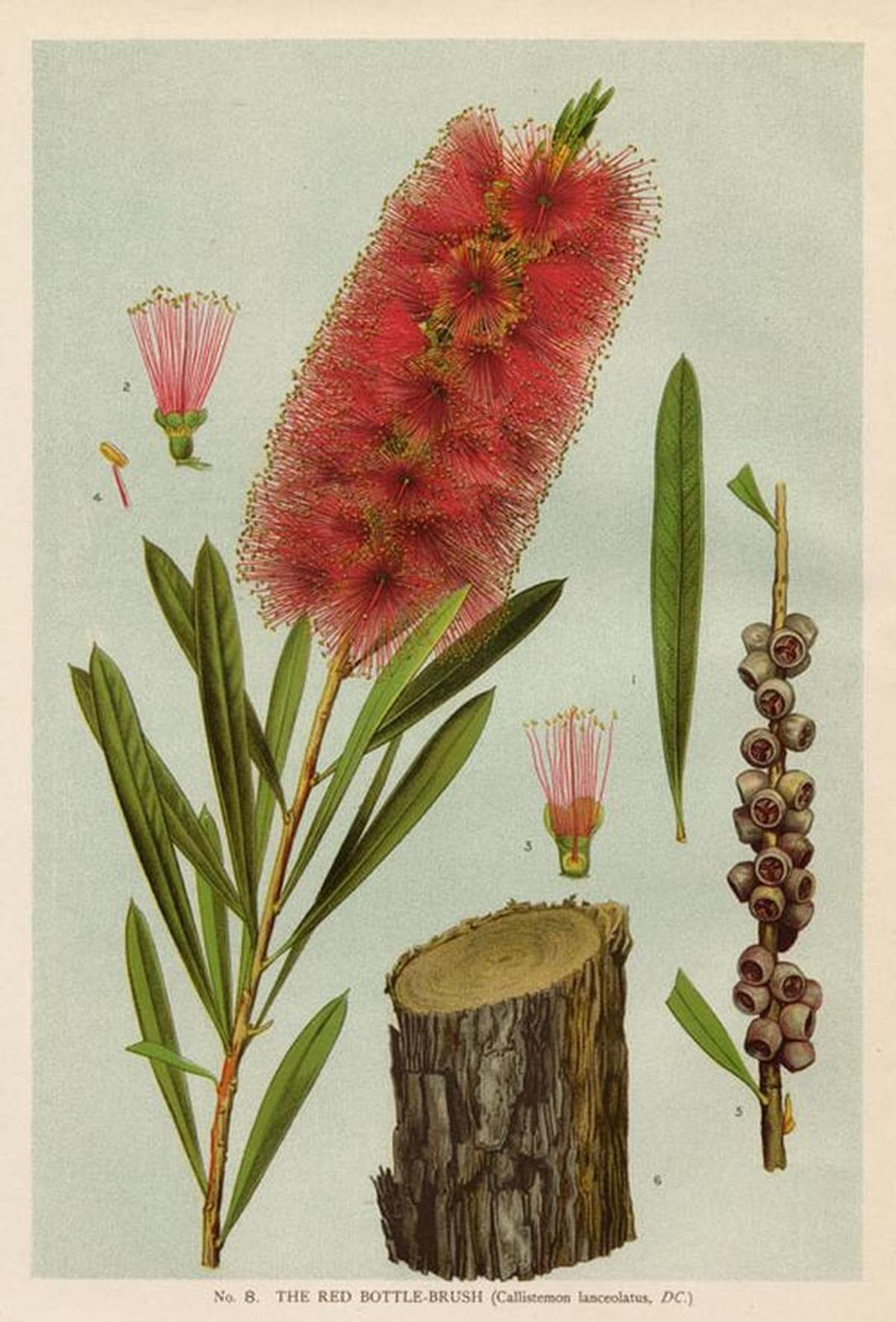Callistemon spp.
MyrtaceaePlanta originaria del sudoeste de Australia (Queensland, Nueva Gales del Sur y Victoria). Su exuberante floración de grandes espigas de color rojo se acompaña de un sutil aroma a cítricos; de ahí el epíteto "citrinus" de una de las especies más frecuentes, el Callistemon citrinus.
Callistemon proviene del griego, con el significado de "hermosos estambres", en alusión a sus flores. Entre las especies más frecuentes están el C. rigidus (con ramaje rígido y erecto), C. viminalis (con tallos delgados y flexibles, de porte llorón) y las dos especies más habituales; el C. citrinus (muchas veces identificado con el sinónimo C. laevis, del latín lēvis, que significa leve o suave) y el C. speciosus, (generalmente más bajo que el C. citrinus y con hojas más estrechas). La principal diferencia entre estas dos especies son sus inflorescencias, más densas en el C. speciosus que en el C. citrinus, con las anteras amarillas en vez de rojas, y un estilo ligeramente más largo que los estambres.La mayoría de estas especies fueron descritas de forma bastante tardía, a principios del siglo XX, pero se utilizan con bastante profusión en jardinería por rápido crecimiento, su exuberante floración y adaptabilidad.
Procedencia
OceaníaCalendario
Hábitat
Morfología
Tipo
 Arbusto
Arbusto
 Arbusto
Arbusto
Porte
 Mata
Mata
h: 2 a 5m
r: 1,00
 Mata
Mata
Hoja
 Simple
Simple
 Simple
Simple
Lámina
 Lanceolada
Lanceolada
 Lanceolada
Lanceolada
Lámina
 Lineal
Lineal
 Lineal
Lineal
Disposición
 Alterna
Alterna
 Alterna
Alterna
Margen
 Entero
Entero
 Entero
Entero
Base y peciolo
 Cuneada
Cuneada
 Cuneada
Cuneada
Ápice
 Acuminado
Acuminado
 Acuminado
Acuminado
Follaje
 Perenne
Perenne
 Perenne
Perenne

 Powered by
Powered by